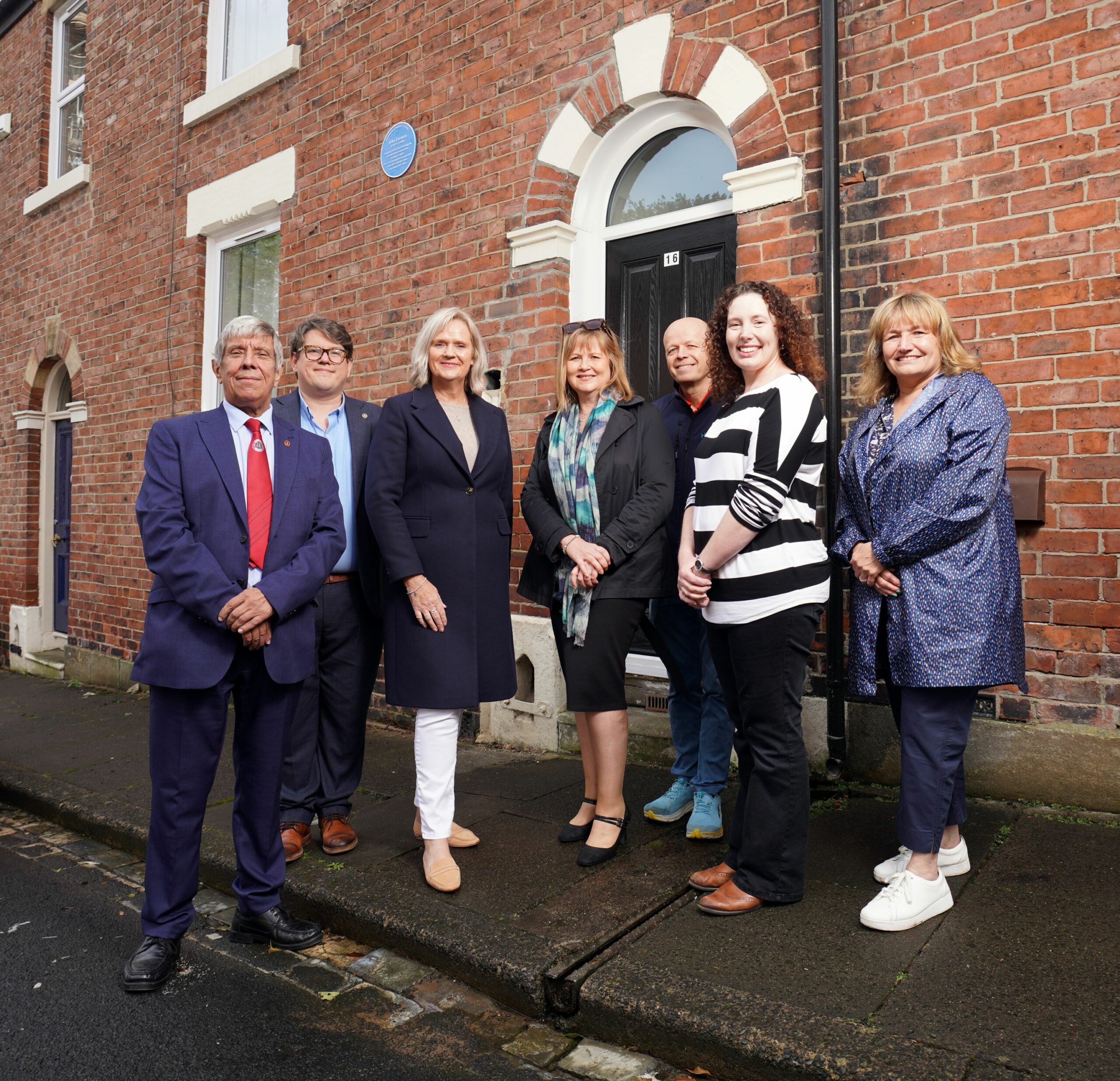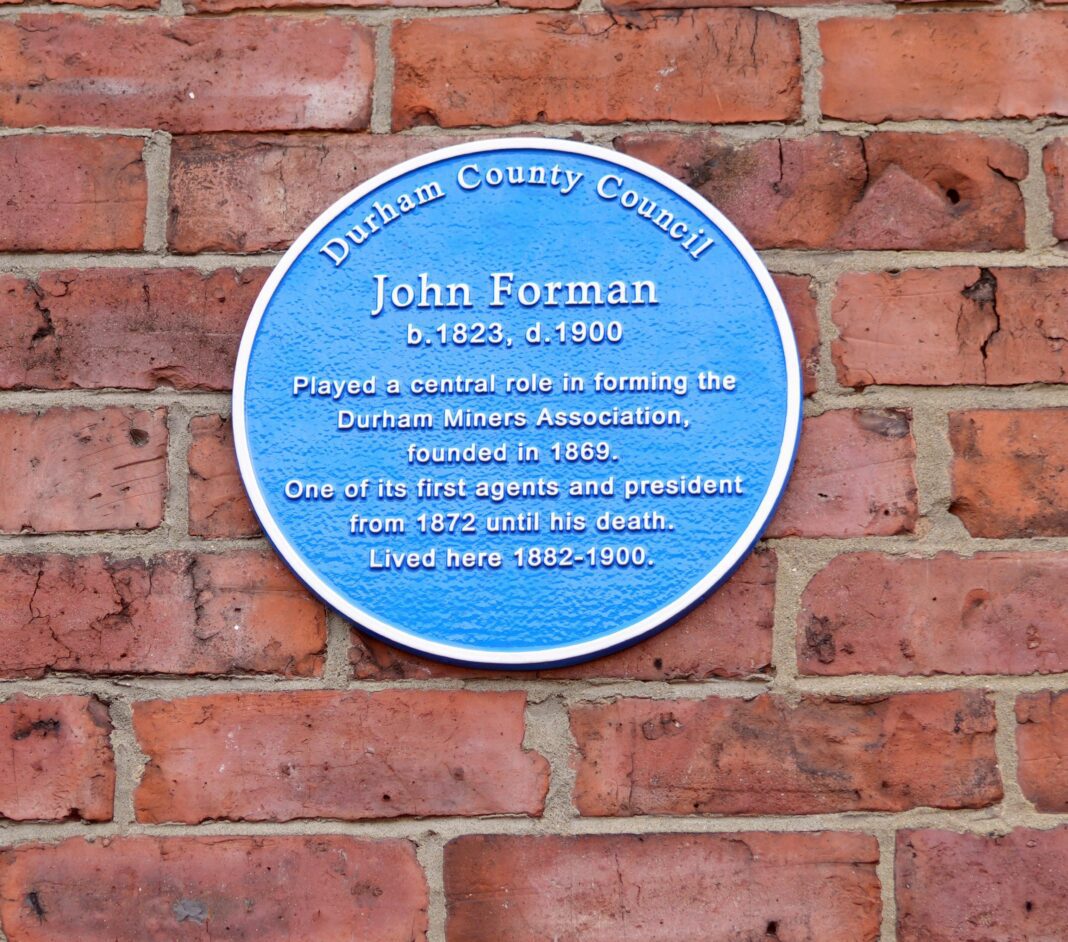A blue plaque now adorns the residence once inhabited by a founding member of the Durham Miners’ Association.
It isn’t clear how long John Forman lived at 16 Mowbray Street, though evidence suggests it was from 1882.
Census records confirm he certainly lived there from 1891 until his death on 7 September 1900.
The terraced home is just a stone’s throw from the Redhills Durham Miners’ Hall, where his statue stands in the grounds alongside other founders.
The son of a miner, John was born in Ancroft in Northumberland in 1823 before later moving to Durham.
He taught himself to read and write and was a founder of the Durham Miners’ Association in 1869, going on to become its president.
John received a gold mourning ring from the then Dowager Marchioness of Londonderry for his involvement in rescue operations following the 1880 explosion at Seaham Colliery.
He was also involved in the rescue effort following an explosion at the same colliery in 1871.
This led him to an interest in mine safety and he wrote a paper on how coal dust ignited and caused explosions.
In 1851, John married Sarah Musgrove, a straw bonnet maker from Dipton, with whom he had six children.

John’s great-great-grandson, Norris Atthey, who made the nomination for the blue plaque, said: “I became aware John was a family member when my mother once mentioned he was her ‘great uncle or something’. She had a newspaper article that referred to him and the other founders of the Durham Miners’ Association having statues.
“When I investigated my family tree, I was amazed to find he was actually my great-great-grandfather. Up until that moment the only member of the family with some renown was my brother, Nicholas, who was a professional footballer!
“Hundreds of people attended John’s funeral and both that and his death were covered by the press at the time. I’m immensely proud of my connection to him and I’m delighted we’ve been able to get this blue plaque in place to commemorate his life.”
Guests at the unveiling ceremony included John’s great, great-granddaughter, Lorraine Baggs, and representatives of the Durham Miners’ Association and Durham County Council.
Alan Mardghum, Secretary of the DMA, who spoke at the unveiling, said: “Our predecessors at the DMA who knew John Forman personally said that he had a ‘deep desire to do his duty by his own people’, and that his life’s work made Forman a ‘household word among the miners of Durham.’
“With his colleagues, he was at the head of an organisation and a social movement that transformed the lives of the people of the county.
“It is vital that we remember people such as John Forman and draw lessons and inspiration from their example as we continue the effort to build a better world today.”
Cllr Elizabeth Scott, Durham County Council’s cabinet member for economy and partnerships, added: “Blue plaques are a world-renowned feature and commemorate notable people and their accomplishments by marking the places where they lived and worked.
“Celebrating the contributions of people like John Forman and the many others who have left their mark on our history is a key part of our aspirations to make County Durham the culture county.”


























